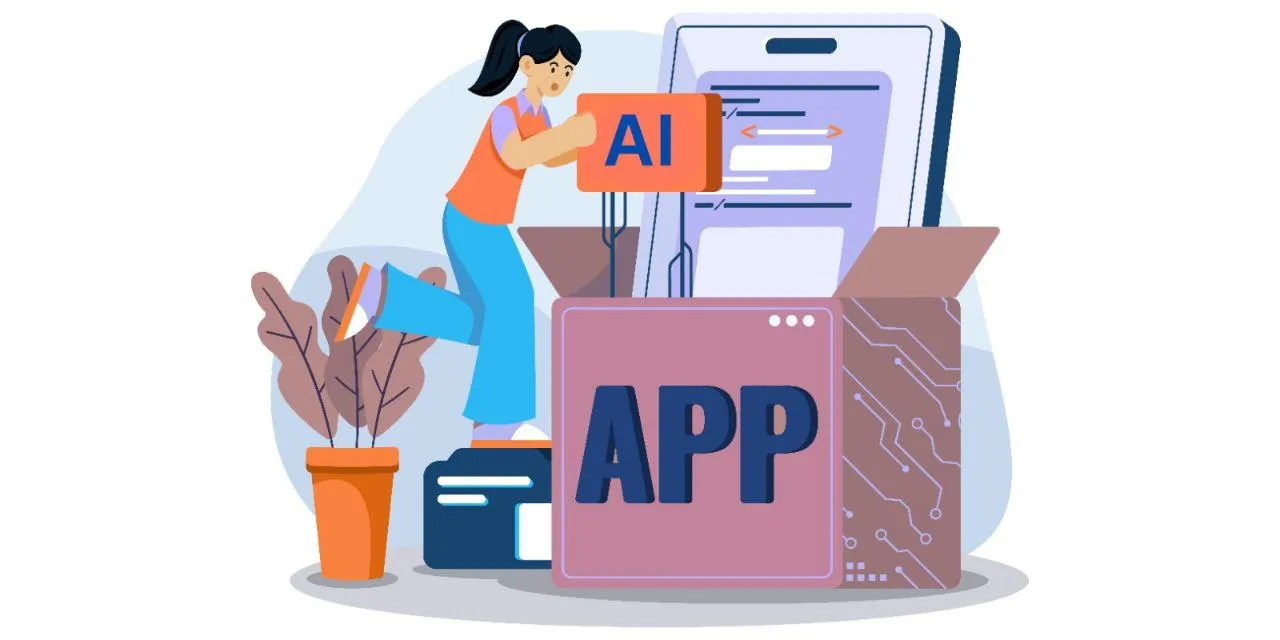
No‑Code & Generative AI in App Development

Table of Contents
When Sophie, a marketing manager at a fintech startup, needed a dashboard to track user activity in real time, she didn’t wait for engineering. She typed a prompt into an AI-powered low-code builder: “Create a dashboard that shows daily user signups and flags churn risk.”
Fifteen minutes later, it was done.
This is what modern software and app development looks like. It’s faster, more adaptive, and increasingly conversational. The lines between coder, designer, and strategist are blurring. And at the center of it all? Generative AI.
The New App Workflow: Designing with Prompts, Not Just Components
For years, no-code and low-code platforms like Webflow, Bubble, and OutSystems offered a new way to build: visually. Users could drag elements onto a canvas, configure basic logic, and deploy functional applications without writing a line of code. It was more accessible than traditional development, but often came with limitations in flexibility and scalability.
With the arrival of generative AI (GenAI), the landscape is changing again.
Instead of assembling components piece by piece, users can now describe what they need in plain language, and the GenAI system generates the structure, design, and logic automatically. It can suggest layouts, write backend code, flag performance bottlenecks, and even refine the user experience in real time.
Benefits for Founders, Designers & Dev Teams
The combination of low code/no code and generative AI enables teams to move faster, unblock ideas, and focus on what really matters. Founders move quicker, designers gain control, and software developers focus on the big stuff. Here’s how it helps:
1. Rapid MVP Development
Cut development time dramatically. Build functional prototypes in days, not weeks. Validate ideas quickly and pivot with confidence.
2. Cross-Team Collaboration
App developers, product leads, and even marketers can contribute meaningfully. With fewer technical barriers, more voices shape better products.
3. Enhanced Customisation Through AI
AI empowers non-developers to create advanced features without writing code themselves. It still generates custom code, but in a way that’s faster and more accessible.
Limitations and Real Concerns
While AI that codes unlock incredible speed and flexibility, it’s not without pitfalls. There are serious risks teams need to understand before going all-in on automation.
1. Black Box Logic
It’s often unclear how or why the AI made certain decisions (For example, with the use of agentic AI), making debugging and refinement more difficult.
2. Security & Compliance
Generated code can introduce hidden vulnerabilities. Questions around compliance, data handling, and IP ownership remain unresolved in many regions.
3. Over-Reliance on AI
There’s a risk of shipping “good enough” products that aren’t built to last. For complex, high-performance systems, custom development is still essential, and irreplaceable.
Real-World Examples
AI-powered tools are already making a real impact across industries. Some examples include:
1. Startup MVPs
Founders are using AI-driven no-code platforms to build and launch functional MVPs in a matter of days, drastically reducing time-to-market.
2. Internal Tools
Large companies are streamlining operations by generating internal apps for task automation, data dashboards, and real-time reporting, no dev team required.
3. Citizen Developers in Action
From HR to marketing, non-technical professionals are building apps and workflows with AI assistance, creating real business value without writing a single line of code.
Why Partnering with Experts Still Matters
AI and no-code tools make building easier, but not foolproof. Lowering the barrier doesn’t take away the risk. Choosing the right stack, structuring logic, and ensuring long-term scalability still demand real expertise.
That’s where professionals like Magora come in. We combine human oversight with AI-powered workflows to help teams build smarter and more sustainable products. From idea to execution, we bridge creativity and technical depth, so you get speed without compromising quality.
Final Thoughts
We’re witnessing a big shift in software development, where generative AI and no-code tools don’t just speed up coding but change how ideas come to life. This isn’t about replacing software engineers; it’s about unleashing their creativity alongside AI that adapts and learns in real time. The future belongs to teams who blend human expertise with AI’s power to build apps that are not only faster but smarter, more flexible, and truly adaptive.
Ready to explore adaptive software development with generative AI? Talk to the team at Magora. We help you build smarter, without losing control.





